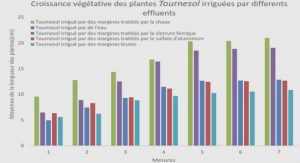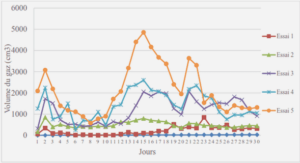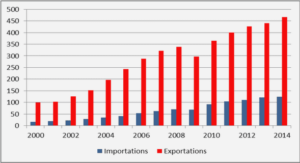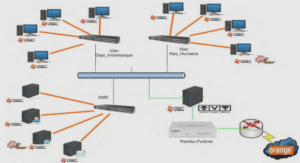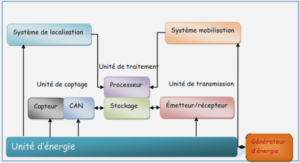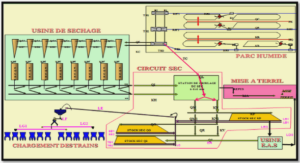Différentiation des espèces en terme de tolérance à l’ombre
Materials and methods
This study made use of two independent data sets collected at the same experimental site in French Guiana. Values for functional traits were measured over the 2007─2009 period and niche parameters were derived from data previously published (Vincent et al. 2011b) and reanalysed in the present study.
Study site and field measurements
The study was conducted in a lowland tropical rain forest at the Paracou experimental site (5o 18′ N, 52o 55 ‘W) in French Guiana. Rainfall averaged 2,875 mm year-1 over the 1986─2005 period with a 3-month dry season (less than 100mm month-1) from mid-August to mid-November. The 14 non pioneer co-occurring species studied are common forest species in French Guiana ( Table 3) and account for 27% of the total tree population (> 10cm diameter at breast height) at the Paracou experimental site.
In order to evaluate species-specific responses to different light regimes, an extensive search throughout the Paracou experimental station was conducted to identify suitable saplings (0.5─3m tall) in all light regime classes. These saplings were to be located outside seasonally flooded areas and any obviously resprouted stems were excluded ( Table 4). In all, 41─76 saplings per species (total 844) were selected, tagged and mapped. All saplings and their light environments were measured annually from 2007 to 2009 (or from the date of first encounter, after 2007).
Light measurement
The light environment of each sapling was evaluated during each census by two observers using a light regime visual estimate based on the structure of the vegetation above and around the sapling. We used a scoring system similar to (Clark and Clark 1992) adapted to suit the forest structure at Paracou where 1= no direct light, dense understorey; 2= light understorey (some lateral light due to close by gap, or thin upper canopy layer); 3= significant direct illumination associated with position either on the edge of a large gap or well inside a small gap; 4=abundant vertical illumination (large gap center, track side). The mean of the two observers’ scores was recorded for each census and the average light environment for each sapling was described by calculating the mean light index value for all the different censuses.
|
Table des matières
Remerciements
Introduction
I. Théories de la diversité à l’échelle locale
I.1 Principe de la théorie de la niche
I.2 Principe de la théorie neutraliste
I.3 Déclinaison de la théorie de la niche aux forêts tropicales humides
II. Différentiation des espèces en terme de tolérance à l’ombre
II.1 Hétérogénéité spatio-temporelle de la lumière en forêt tropicale humide
II.2 Compromis entre croissance à la lumière et survie à l’ombre : de la niche aux traits fonctionnels
II.3 Limites et enjeux
III. Variations intra-spécifiques des traits fonctionnels: existe-t-il des cohérences écologiques dans leurs variations ?
IV. Questions et démarche
IV.1 Questions de recherche
IV.2 Démarche
IV.3 Structure du mémoire
1ère Partie : Quantification of light conditions
I. Estimation of light conditions experienced by juvenile trees
II. Estimation of light conditions experienced by adult trees
II.1 Competition indices
II.1.1 Crown-based competition index
II.1.2 Diameter-based competition indices
II.1.3 Height-based competition index .
II.2 Prediction of CP by diameter- and height-based competition indices
II.2.1 Method
II.2.2 Results
2ème Partie : Functional traits and their plasticity predict regeneration niche even among tropical tree species with intermediate light requirements
I. Introduction
II. Materials and methods .
II.1 Study site and field measurements
II.2 Light measurement
II.3 Whole-plant functional traits
II.4 Leaf functional traits
II.5 Functional trait analysis
II.6 Maximum adult stature (Hmax)
II.7 Light niche characterization
III. Results
III.1 Light niche characterization
III.2 Across-species correlation between leaf lifespan and leaf mass per area
III.3 Across-species correlations between leaf traits and whole-plant traits
III.4 Across-species correlations between functional traits, light niche parameters and adult stature
IV. Discussion
IV.1 General trends in trait covariations among species with intermediate light requirements
IV.2 Prediction of light niche parameters and ecological significance of plasticity
V. Conclusion
Références
3ème Partie: Plastic and evolutionary variations of tropical trees crown depth are not related to light harvesting strategy
I. Introduction
II. Materials and methods
II.1 Study site and field measurements
II.2 Species description
II.3 Light measurement
II.4 Whole-plant functional traits
II.5 Leaf traits
II.6 Axis and crown traits
II.7 Sapling size effect
II.8 Plasticity in functional traits
II.9 Light niche characterization
II.10 Interspecific and intraspecific variation analysis
III. Results
III.1 General trend of inter- and intraspecific variation of crown shape
III.2 Determinants of inter- and intra-specific variations of relative crown depth
III.3 Is morphological plasticity lower for the more specialized species?
III.4 Does plastic response to shade enhance light interception?
IV. Discussion
IV.1 Can leaf life span and vertical crown extension explain inter- and intra-specific patterns of crown depth?
IV.2 Is morphological plasticity lower for the less specialized species?
IV.3 Are crowns of shade trees more efficiently organized for light capture?
IV.3.1 Variations in crown structure
IV.3.2 Variations in leaf display
V. Conclusion
Références
4ème Partie : Vertical stratification reduces competition for light in dense tropical forests
I. Introduction
II. Material and methods
II.1 Inventory data
II.2 Competition indices
II.3 Growth model
II.4 Model specification
II.5 Absolute importance of above and belowground competition
II.6 Relative importance of symmetric and asymmetric competition
III. Results
III.1 Structure of the competitive environment
III.2 Community pattern of growth sensitivity to resource competition and DBH
III.3 Absolute importance of CP and LBA
III.4 Interspecific variations in absolute importance of resource competition
III.5 Relative importance of CP and LBA
IV. Discussion
IV.1 Is aboveground competition more important than belowground competition in tropical forest?
IV.2 Relationship between species sensitivity to light and to aboveground competition
IV.3 Why is the predictive power of light competition so limited?
IV.4 Sources of unexplained inter-individual variation in growth rate
V. Conclusion
Références
Synthèse et perspectives
I. Synthèse
I.1 Les traits morphologiques et leur plasticité permettent-ils de mieux comprendre les relations traits-performances-niche et le mécanisme de tolérance à l’ombre ?
I.2 Peut-on prédire l’amplitude de niche à partir de la plasticité des traits fonctionnels ?
I.3 Peut-on étendre la validité de la théorie de la niche aux espèces intermédiaires en terme de tempérament ?
I.4 Quelle est l’importance relative des variations intraspécifiques de la croissance produites par la compétition pour la lumière ?
II. Perspectives
II.1 Prise en compte des contraintes biomécaniques
II.2 Exploration du rôle des variations intraspécifiques dans la structuration des communautés végétales
Références
Annexes
Liste des figures et tables
![]() Télécharger le rapport complet
Télécharger le rapport complet

